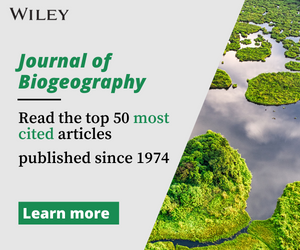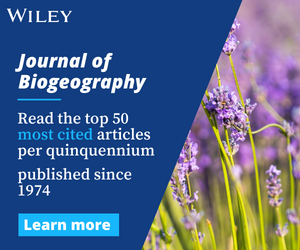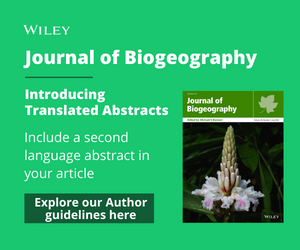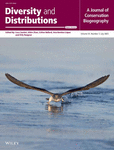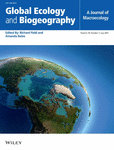Virtual Issues
 |
Journal of Biogeography Innovation Awards The Journal of Biogeography (JBI) is committed to developing new opportunities that complement and extend biogeography's reach and impact, in addition to bringing the broadest and best new biogeographic research. This virtual issue does both, collating papers submitted in response to a call for papers first-authored by early career researchers, following a lead to create a venue that encourages new ideas and perspectives in the discipline. This collection presents the resulting papers, which have received the JBI Innovation Awards. The manuscripts were considered using JBI's standard editorial and peer review processes, and were additionally ranked in terms of the originality of their ideas, identification of a gap in knowledge, and impact of findings. The collection will grow each year, illustrating the creativity and vigour of biogeographical research on any topic being led by early career researchers from across the globe. |
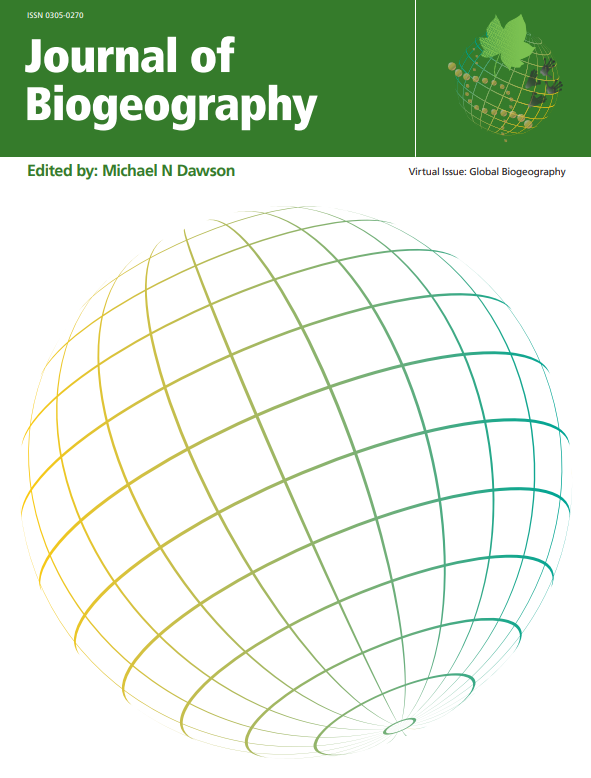 |
Global Biogeography The Journal of Biogeography (JBI) is the leading journal encompassing biogeography, yet the journal’s pages are not representative of the full spatial diversity of important biogeographic questions, nor of the people who might ask them. It should be self-evident that we cannot understand how the world has changed and will change if our sampling of it is geographically biased; biogeography can be bettered by fostering pluralistic perspectives. Thus, we mark the journal’s 50th anniversary with a new initiative in Global Biogeography, which seeks to better represent the geographic variety in biogeography. The effort begins with this virtual issue, which serves as a retrospective compiling the most-cited studies from each country in JBI’s back-catalogue that were conducted in countries around the world by biogeographers employed at institutions in those same countries. |
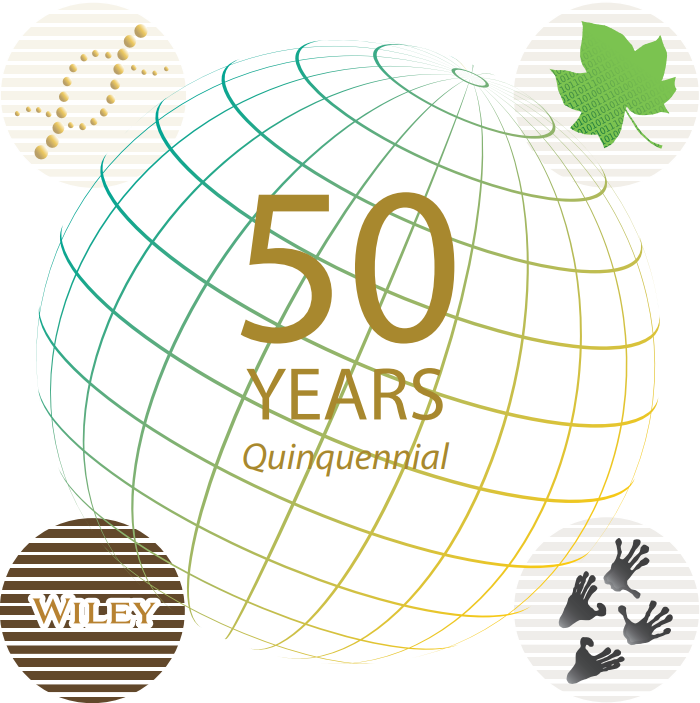 |
Journal of Biogeography 1974 - 2023 Top Papers How have hot topics in biogeography changed through time? Anniversaries offer an opportunity to reflect on such developments. Here, we present a list of the 50 most highly cited articles – a compilation of the 5 most highly cited papers per quinquennium – that have appeared in the Journal of Biogeography (JBI) since its inception in 1974. In their time, all these papers have been material, driving the discipline forward. Some of them remain so now; others may be of renewed interest on a careful reading. It is an impressive collection of papers on which to reflect, and we hope you enjoy delving into the archives! |
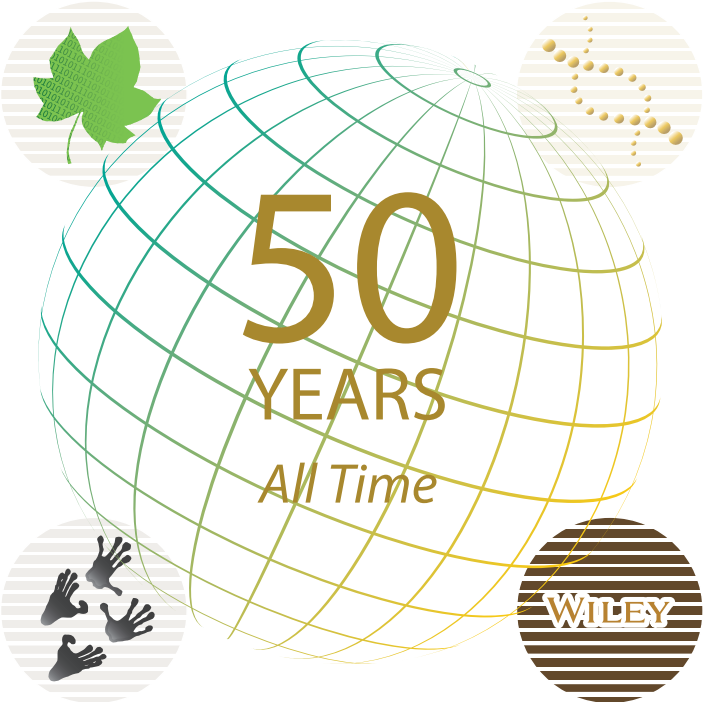 |
50th Anniversary Top 50 Cited Papers |
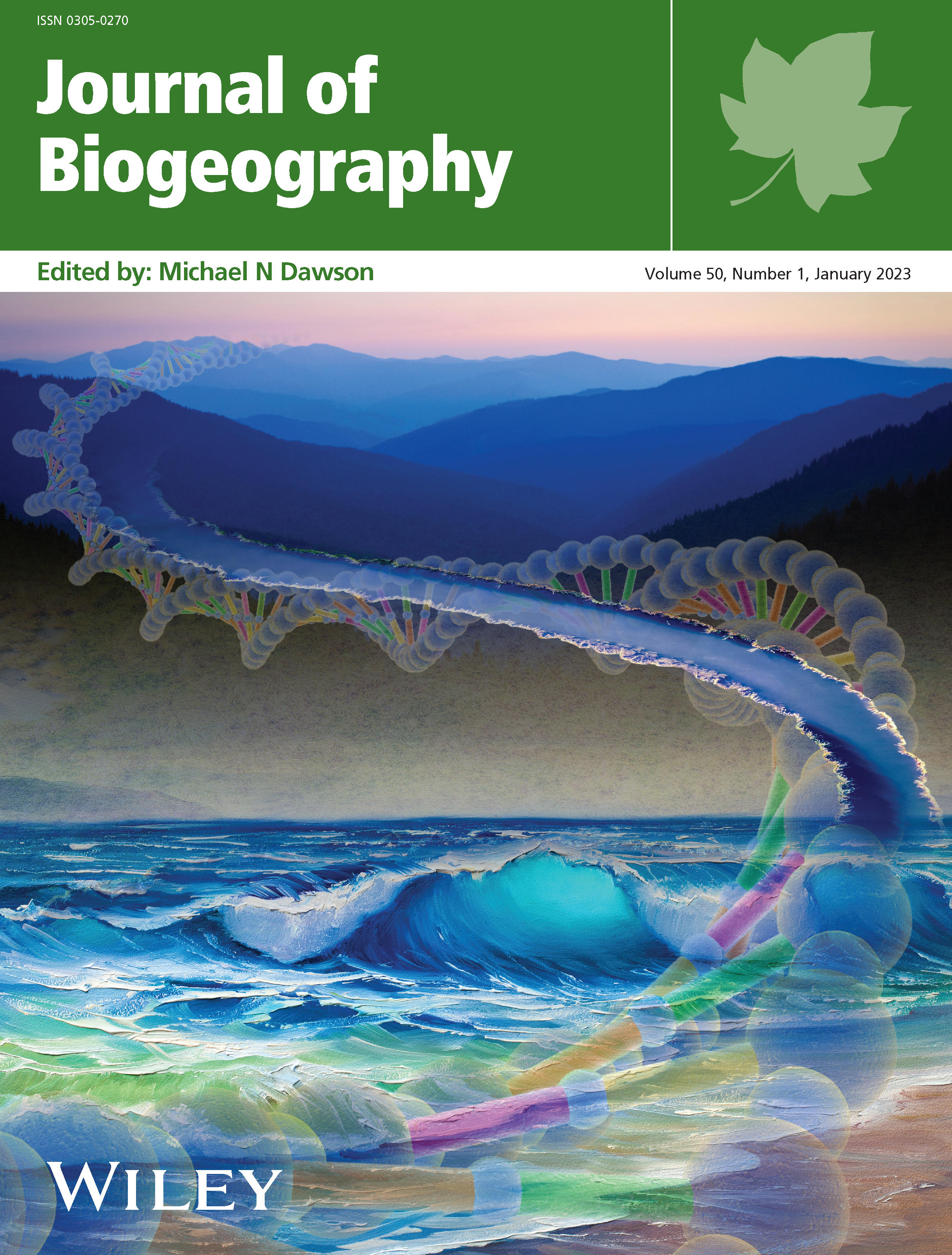 |
Biogeography is an integrative discipline, as is reflected in familiar combinatorial neologisms including bio⋅geography itself and disciplines such as phylo⋅geography and macro⋅ecology. One recently introduced term — geo⋅genomics — represents interdisciplinary approaches using “large-scale genetic data to test or to constrain geological hypotheses” (sensu Baker et al. 2014, p.38). Geogenomics is eight years young, arguably in its foundational phase, and its relationship with other disciplines of biogeography is developing. This virtual issue reviews the origins of geogenomics, compiles a suite of new papers that reflect geogenomics’ current purview (as practiced by biogeographers), and considers its potential to change the way we combine genetics and geology for answering biogeographic questions. Read more |
1365-2699.Women_in_Biogeography.cover.png) |
Despite increasing awareness of issues affecting inclusivity, equity and diversity, change has been slow in science and academia, and gender disparities remain significant. Biogeography does not escape this pattern. In this virtual issue, we compiled some of the most cited papers led by women in the Journal of Biogeography between 2009 and 2020. Published papers were grouped by 3-year blocks so that more recent ones, which have received fewer citations, were put on more equal footing with older ones.Read more |
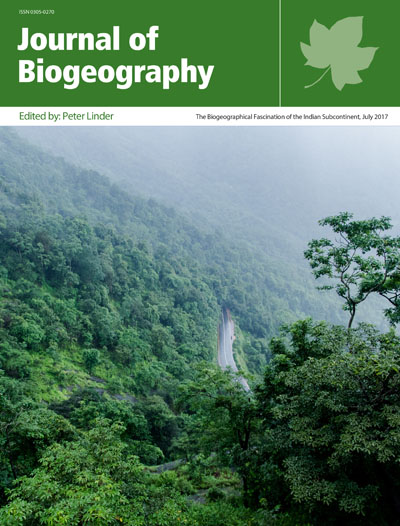 |
The Biogeographical Fascination of the Indian Subcontinent The Indian subcontinent (also referred to as South Asia) is a biogeographical wonderbox, rich in diversity, and rich in patterns that can be used to test many hypotheses. The gradients are impressive: from sea level to the worlds' highest mountain, from the wet tropical forests of Sri Lanka to the arid desert of Pakistan, from the massive mangrove forests of the Sundabans to the montane forests of the Ghats, large savannas, and this in co-existence with thousands of years of human civilisation. Read more. |
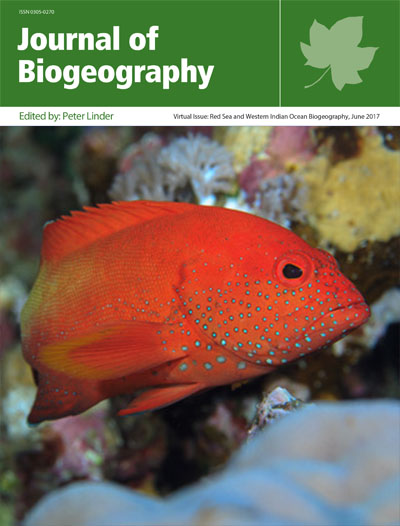 |
Red Sea and Western Indian Ocean Biogeography The Red Sea and Western Indian Ocean represent iconic and strategic locations in our tropical oceans, and yet few studies address the origins, maintenance, and distribution of marine fauna of these locations. This virtual issue of the Journal of Biogeography (JBI) serves to illustrate the biogeographical advances in these habitats at the periphery of the vast Indo-Pacific region with an editorial introduction, 14 contributions from an international workshop, and a set of 24 papers previously published in JBI. The selection includes a number of influential research studies that present novel data, those that apply methods to synthesize general patterns, and some that utilize newer genetic methods to infer patterns of the evolutionary history of coral reef ecosystems within this region. Read more. |
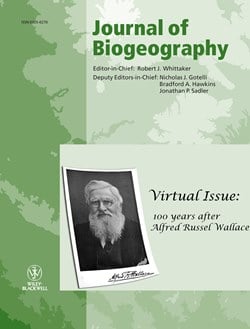 |
100 years after Alfred Russel Wallace This selection of papers highlights the enduring legacy of Alfred Russel Wallace to biogeography 100 years after his death in November 1913. Wallace is perhaps best known for his co-discovery, alongside Charles Darwin, of the theory of evolution, but he is also recognized as a key founding father of zoogeography. Wallace regarded the delimitation and acceptance of the major zoogeographical regions of the world as being a crucial step in the study of the laws of distribution. In this virtual issue of the Journal of Biogeography we have therefore assembled a set of papers spanning 1983 to 2013 that focus, for the most part, on the problem of regionalization, providing illustration of the abiding relevance of Wallace’s work today both for pure and applied biogeography. Read more. |
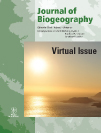 |
The species-area relationship: an exploration of that 'most general, yet protean pattern The generality of the increase in the number of species with the physical space sampled, the species–area relationship, is a fundamentally important biological pattern, of considerable significance for conservation biogeography. This virtual issue of the Journal of Biogeography serves to illustrate the development of ideas concerning the various forms of the species–area relationship from 1974 (the first volume of the journal) to the present day. It features an editorial introduction alongside a set of 24 papers previously published in the journal. The selection includes a number of influential contributions to understanding species–area relationships and their application and we hope may be of value to researchers and educators. Read more |




